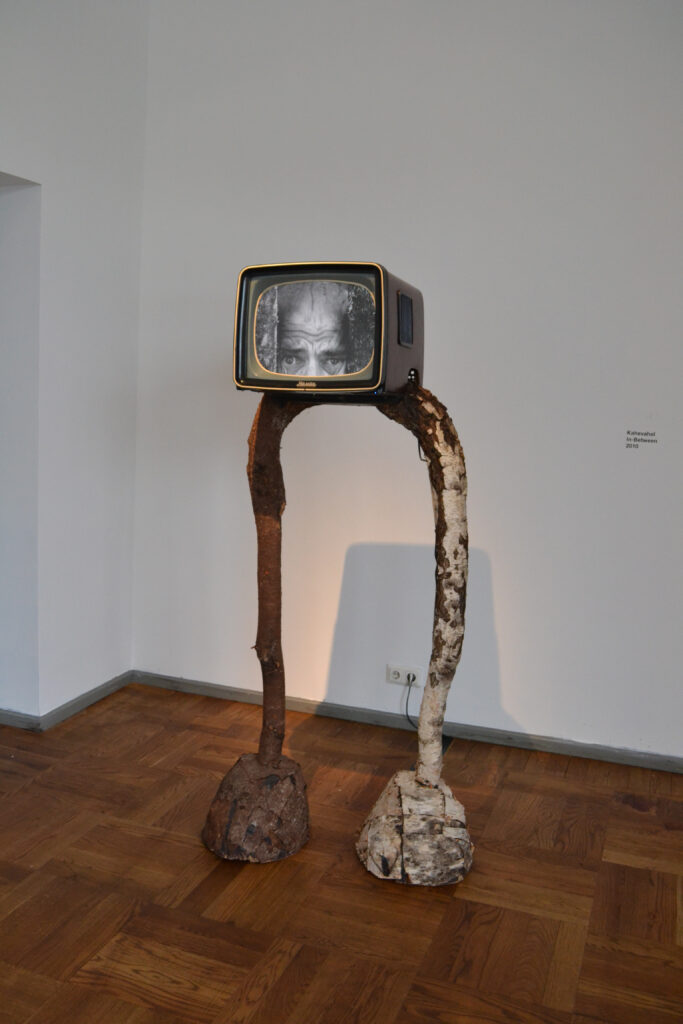
Jüri Ojaver (1955) is mainly known as a sculptor and installation artist, however he also works with video and performance. Ojaver’s research-based explorations look into material heritage from the past, often characterised by the absurd and existential dimension of randomness. His works that focus on memory and history are often site-specific.
Ojaver began his artistic career as a restorer, working with heritage protected objects in Tallinn Old Town. In the 1980s his sculptures were mostly figurative, using granite, marble and limestone. The changes in society in the 1990s made it possible to discuss events and subjects that were not publicly acknowledged during the Soviet period. Inspired by these developments Ojaver began creating site-specific installations, focusing on sites of memory and history.
The works “Niche. Image” (1993) and “Nonexistent Cemetery” (1994) that were exhibited at the annual exhibitions of the Soros Center for Contemporary Arts, Estonia, where they won Grand Prix, act as frames for something that, although physically absent, exists in the memory of people. The absence of matter while a mental image is present, is a universal issue, explorations of which positioned Ojaver as one of the most notable artists in Estonia after the country regained its independence.
Ojaver’s international success is marked by his participation in the 1995 1st Gwangju Biennale in South-Korea with the work “Father. Son” (1995) In 1999 Ojaver represented Estonia at the Venice Biennale together with Peeter Pere and Ando Keskküla. Jüri Ojaver’s work “Keystone” was a two-part waterproof plywood sculpture, exhibited in front of and in the garden of Palazzo Querini. The sculpture was based on the motif of spread legs, placed as a bridge over the canal in front of the palazzo. In the back garden of the palazzo viewers saw an upside down version of the sculpture, legs stretching towards the sky. Ojaver’s bridge changed the spatial logic of the building, connecting the water gates of both shores and thus making the kitchen door into its main entrance.
In Ojaver’s video work, its formal qualities also play a significant role. The works are often exhibited in ready-mades. For example, “Long Waves, Medium Waves” (2006, Tartu Art Museum) was installed in a Soviet era radio, referring to the censoring of information by the Soviet state, and “Ela ja sära” (Live and Shine, 2010), placed in a cuckoo-clock, referred to the grant of the same name the artist was hoping to receive. One of the most original of works of this kind was “I Love Life” (2007), displayed in a sewer hatch.
One of the most extensive shows of Ojaver’s work “Song” (2012, Tallinn Art Hall) presented older works in dialogue with the new, and even positioned the two as reflections of one another. As the works were exhibited in pairs, the exhibition posed the question of the relationship between the original and (author’s) copy, a theme present throughout Ojaver’s work.
At the solo show “Dying Dog. Vol 2” (2017, Vabaduse Gallery) the artist exhibited a monument to those who have departed prematurely – on the wall of the gallery the artist had attached a granite cenotaph with a broken Soviet era flashlight, a Christmas tree stand and air freshener with mixed media series “Shoot Me” depicting a dying dog. The show was opened with a performance by the artist.
Ojaver has performed often, including at KanaNahk Festival (2001), where he performed a balancing act, walking Rakvere’s main street with a spirt level in his hand, while keeping his eyes on the bubble.
At the exhibition “Men’s Shop” (2017) Ojaver used other men’s words to discuss men’s health, quality of life, mortality rate and the imprint they leave on culture and memory. He exhibited 46 stone columns with quotes by the artist’s friends. In the second room Ojaver had attached numerous men’s ties to the wall, referring to the fact that the gallery used to be a men’s shop.
Jüri Ojaver studied at the Estonian Agricultural Academy (1973–1975). He has been the head of the Department of Sculpture at the Estonian Academy of Arts. Ojaver is part of the artist group Eesti Energiad (together with Jaan Paavle, Jaan Toomik and Paul Rodgers). He is one of the founders of Sammas Gallery (currently Vabaduse Gallery). He has received the Annual Award of the Youth Section of Estonian Artists’ Association (1988), the First Prize of the Baltic Sculpture Quadrennial (1992), the Grand Prix of the 1st and 2nd Annual Exhibition of Soros Center for Contemporary Arts, Estonia (1993, 1994), the Annual Award of the Estonian Cultural Endowment (1995) and Füürer Preiss (2017). Jüri Ojaver’s works belong to the collections of the Art Museum of Estonia, Tartu Art Museum, Tallinn Art Hall, and the Richard Sagrits Museum.